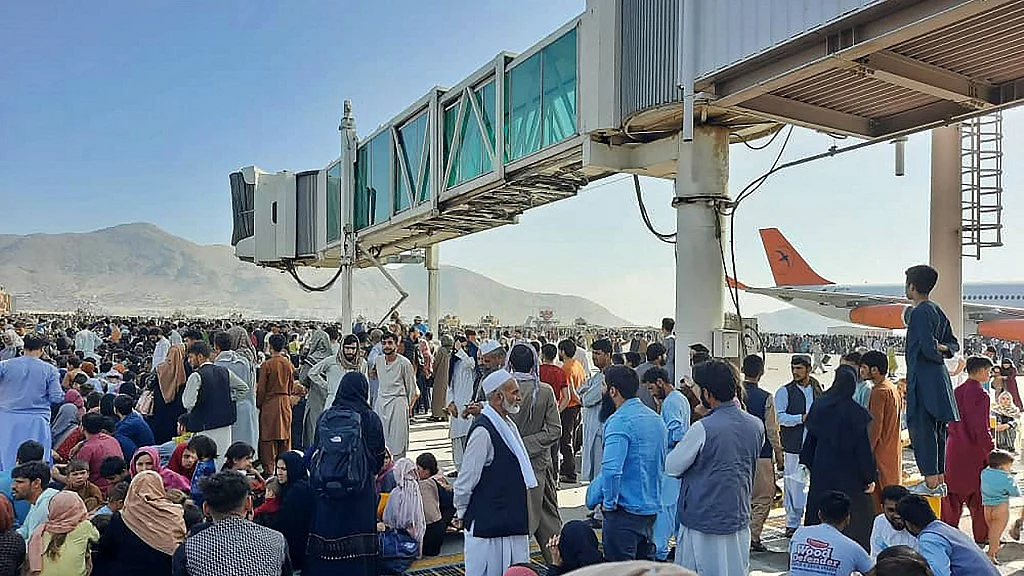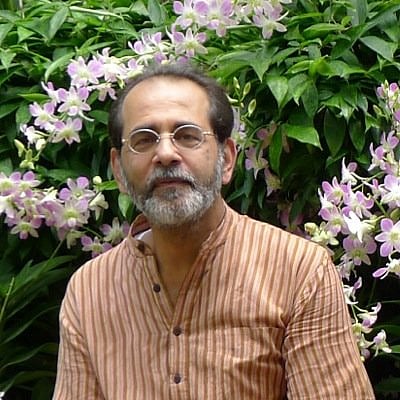India was short-sighted in Afghanistan, should have seen it coming: Former Ambassador Rakesh Sood
‘I have no idea why the govt did not see this coming. It has been clear for a number of years that the Taliban were coming back’, former Ambassador to Afghanistan Rakesh Sood said in an interview

One of India’s former Ambassadors to Afghanistan and currently Distinguished Fellow at the Observer Research Foundation, Rakesh Sood said the implications for India are negative with the fall of the Islamic Republic of Afghanistan and the rise of the Islamic Emirate of Afghanistan under Taliban.
Sood, who has also served as the ambassador to Nepal and France, said India was short-sighted and could have explored other options instead of putting all its eggs in one basket.
Edited excerpts of an interview with Rakesh Sood:

India’s neighbourhood has just become unstable with Taliban having taken over. What kind of government is likely to be formed?
I think it is difficult to predict the shape of the government that will be formed. However, the statements have indicated that it will be an Islamic Emirate of Afghanistan. Their statements have been ambiguous about the rights of minorities, the rights of women and many other aspects too.
The kind of government cannot be foreseen as there are different groups amongst the Taliban. For the last few years, we have been seeing the group that has been negotiating with the rest of the world from Doha. Then there is Quetta Shura, and they are located in Quetta.
We know that one of the deputy leaders is Sirajuddin Haqqani, who heads the Haqqani network. He is particularly influential in the Eastern part of Afghanistan. Another of the deputy leaders is Mullah Omar’s son, Mohammad Yaqoob, who heads their military operations particularly in the south of the country.
Then there are the foreign terrorist groupings – The Islamic State or Daesh, Tehreek-e-Taliban Pakistan, East Turkestan Islamic Movement (ETIM), IMU, Tajik Groups and groupings of Syria-returned fighters. Most of these groups are in the North. The power sharing between all of these groups will determine the kind of governance.
What are the implications of the Taliban takeover for India?
The implications for India are certainly negative. There are two ways of looking at it and both unfortunately carry negative implications. First is an increasing influence of Pakistan in the region and what it means for us given that we have hostile relationship with Pakistan. The Pakistan PM Imran Khan commented that Taliban coming to power in Afghanistan meant they have shaken off the shackles and have embraced freedom. Clearly, Pakistan is not exhibiting any concern about the current environment in Afghanistan.
Secondly, if there is instability in Afghanistan that is also a negative development for regional security as far as India is concerned.
Was the Taliban takeover of Afghanistan inevitable?
It could not have been avoided. In some ways, the US had accepted it. After all, last year when an agreement was signed between the United States of America and Islamic Emirates of Afghanistan, which was not recognised by the US, and is known as the Taliban, it nevertheless accords the entity a tacit legitimacy. This is the most clear indication by the US that it had more or less accepted the coming into being of the Islamic Emirate and in doing so, had handed over the Afghan project to the Pakistan ISI.
It was done at the expense of the government in Kabul. Rubbing salt in the wounds was getting the government in Kabul to release 5,000 Taliban fighters who were held in custody in Afghanistan prisons.
By 2020, it was clear that the days of the Islamic Republic of Afghanistan were numbered.
After having interfered in Afghanistan’s affairs and enabled Taliban for 19-20 years, the US abandoned Afghanistan. There is no help forthcoming from the UN. What does the future hold for the citizens of the country?
Unfortunately, the future looks particularly bleak for the Afghans. Afghanistan is a young country. At least 70% of its population is below the age of 30. Taliban were ousted from power 20 years ago, so nearly 70% of the population has either come of age or were born in a post-Taliban world. They have lived their lives in a conservative society, but an open society. Therefore, there is enormous amount of consternation and concern in Afghanistan especially among the younger population as to what the future holds for them.
India is the president of UNSC for the month of August. What could have India done to help the Afghanistan citizens?
India could have done nothing. If India had explored other options instead of putting all its eggs in one basket, then India could have planned better. Instead, now we have a situation in Kabul where we are trying to ensure the safety of Indian nationals who are working for other companies as well as the Indian Embassy, in a highly volatile atmosphere. We are yet to get them out.
If we had planned better, we could have evacuated them earlier while the airport was still functional before August 16. What have we achieved by delaying this process as it would take a couple of days more to get people out?
If we had foreseen the writing on the wall, we would not have lost anything. If the US could not have prevented it, then we do not have the resources to prevent it. But, we could have planned better for it.
Is it policy paralysis or lack of concerted strategy on the neighbourhood by India that delayed our response?
I have no idea why the government did not see this coming. It has been clear for a number of years that the Taliban were coming back. The process of legitimisation of Taliban became public knowledge when they opened an international office in Doha, in Qatar. It was step one towards legitimisation as they were no longer hiding in Pakistan or the border areas. They were travelling to international conferences, meeting journalists and it was a gradual process of gaining acceptance.
Various peace conferences such the Heart of Asia process, the Istanbul process, the quadrilateral process and Moscow process had them. In 2018, the US opened direct talks with the Taliban, further legitimising it, and signed an agreement last year, which I have already mentioned. So, how much more evidence did we need that the US has accepted the idea the Islamic Republic of Afghanistan’s days were numbered and would get replaced?
I do not know whether it was analysed as such by the government and if it was, what the government planned for it.
Should India engage with a fundamentalist organisation like Taliban?
If you look at the statements given by the Ministry of External Affairs, it has stated that we are engaging with all stakeholders. We have participated in meetings where the Taliban was present. So, it is not a question of engaging with ‘fundamentalists’ as these are all labels. We have certain interests in Afghanistan and it is the responsibility of the government to ensure the safety of the Indian citizens and the safety of those in the Indian Embassy.
Was India being impractical by not engaging with them?
India was short-sighted. We are not engaging with them to change their behavior or create a split between them and Pakistan. We should have engaged only to have our own judgment, but so that we are not left suddenly without options because we are part of this region.
Right now, it is a situation in which we were left unprepared when the Americans began to withdraw rapidly. This is the general perception. If we had engaged and come to our own conclusion on Taliban, then perhaps we could have taken a few steps to mitigate the adverse effect.
Has this given Pakistan and China an edge in the region?
Certainly. When Pakistan’s position improves, so does China’s.
Taliban seemed to take taken over cities clinically, with a plan. Could it have happened without the assistance from Pakistan’s Army?
I would think that they had assistance from Pakistan’s ISI. At first they went for the police or Army posts in remote areas. These kinds of posts are manned by a maximum of 15 persons. A Taliban group of around 50 armed men would surround them and they would be informed that their lives would be safe if they surrendered. They usually surrendered and whatever arms and ammunition they would have at the post would be taken by the Taliban.
This is how they began to move from the month of May. Even in the third week of June, Taliban had the control of about 81 districts out of 421 districts in the country. In the next four weeks, the Taliban had expanded their hold to more than 220 districts, which is more than half. By this time, they were targeting districts with customs checkpoints, from where they could gain revenue. From there they began moving to provincial capitals.
The first provincial capital (Zaranj) fell on August 6. From August 6 to August 15, they had the entire country. So, it was a fairly well planned military strategy that was put into operation taking into account that it was more important to demoralise the security forces that actually fight with them. That was the strategy that was adopted.
How do you compare the first coming of the Taliban in 1990s to the second coming of Taliban now?
The difference between 1990s and now is that when the Taliban took over Kabul in 1996 to 2001, it was an uphill task for the Taliban to gain legitimacy. In 2001, there were only three countries that recognized Taliban – Pakistan, United Arab Emirates and Saudi Arabia.
This time they start with an advantage because they already enjoy a higher degree of legitimacy. They have a deal with the US, have travelled to China, Russia, Turkey, Iran and several other countries. That is the key difference.
Follow us on: Facebook, Twitter, Google News, Instagram
Join our official telegram channel (@nationalherald) and stay updated with the latest headlines
